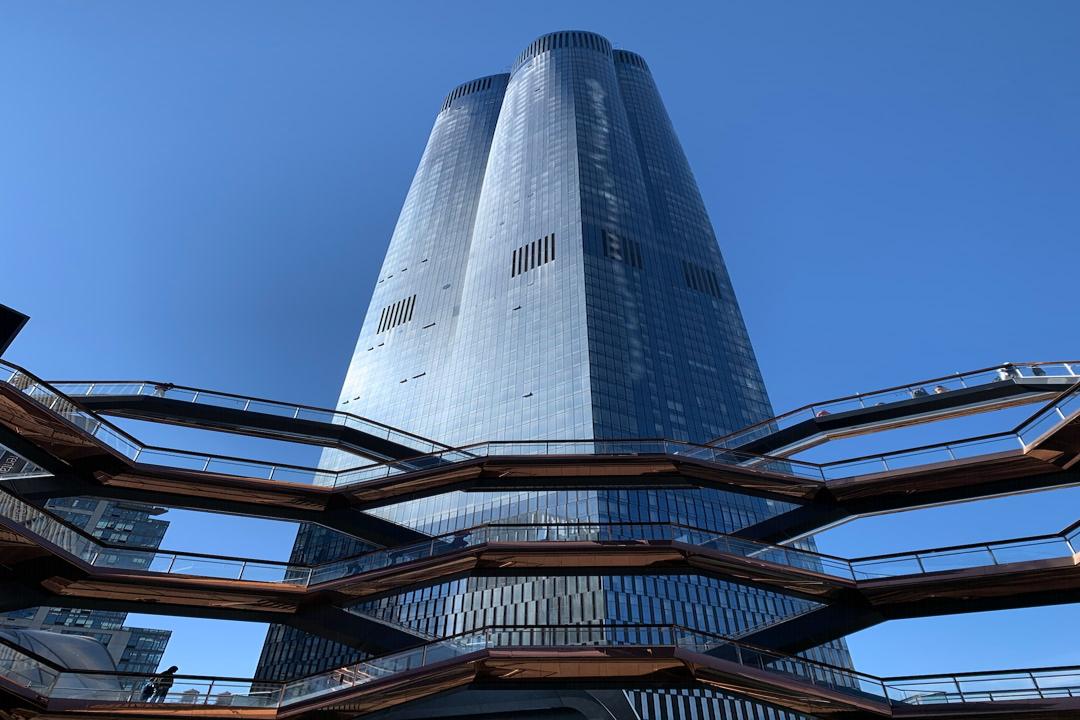Interview: DUDU (PukeCastCN), Jasmine (Runes Community)
Translation: Jaleel, BlockBeats
Editor’s Note: Casey Rodarmor (@rodarmor) is a programmer and Bitcoin developer who created the Ordinals protocol and the Runes protocol within a span of two years. Through the development of the Ordinals protocol, Casey introduced a new way to store and transfer non-monetary data (such as digital art) directly on the Bitcoin blockchain. It can be said that without Casey, there would be no Bitcoin ecosystem.

Casey speaking at the Ordinals Asia conference in Hong Kong
Before the launch of Runes, Casey jokingly said that if the market value of the Runes ecosystem did not reach $1 billion within a month of its launch, he would prepare to commit ritual suicide. Although the target was briefly achieved in the middle, the market value did not meet the standard after a month. How did Casey respond to this joke? The Bitcoin ecosystem conference two weeks ago in Hong Kong was very lively. How did Casey feel about it in Hong Kong? Jasmine, one of the creators of the Runes Chinese community, and DUDU from PukeCastCN chatted with Casey in a Space session yesterday. BlockBeats has compiled the interview below, with some parts omitted.
DUDU: The Bitcoin week in Hong Kong two weeks ago was very lively. What are your thoughts on this? I heard that many people got sick because they partied too hard.
Casey: Yes, I took a week and a half to recover, but I’m fine now. The Bitcoin market in Hong Kong is really crazy. Western and Eastern players are very different. Chinese people really like gambling and have a great passion for Runes and meme coins. I think this is much better than many Western meme coins enthusiasts who pretend to be pursuing some future of finance or even talk about banking Africa. The market here is more pure and honest, and everyone is talking about how to make a lot of money.
DUDU: The Rune protocol has been launched for a month. How do you feel about the first month? Are there any special surprises or things you want to mention?
Casey: There were no surprises, which is fortunate. My main concern was bugs in the protocol. If there were protocol-level bugs that disrupted the balance of Runes or affected minting or transfers, that would be bad. But so far, everything has been smooth, and there are no protocol-level bugs. There was a small bug in the ord (a reference implementation of Runes), which was unfortunate, but it wasn’t a big issue, and I’m glad it was fixed in a timely manner.
I think it is foreseeable that there will be many people disappointed when Runes is first launched because it has been hyped up so much, and everyone is saying things like “these things are going to the moon.” But the reality is different. When a technology is first launched, it is in its worst state. The ecosystem has poor support, the tools are incomplete, and the trading platforms are not well-established. I think it is natural for there to be some disappointment.
I don’t know what will happen to the price and popularity of Runes, I don’t make predictions. My only profitable investment is Bitcoin, and as an investor, my wisdom is very limited. I really don’t know what will happen. It is pleasing to hear from those who have integrated Runes that it is much easier than integrating BRC-20, which makes sense. The protocol is simpler, especially when you do anything with BRC-20, like creating a script and possibly transferring it. Transferring a BRC-20 requires three transactions, which is quite a lot. Transferring Runes only requires one transaction.
I think the technical advantages of Runes in terms of simplicity and efficiency have already shown. It has always been simple and efficient, and those who have integrated Runes say the same. That’s great. I don’t know what market Runes will occupy in the future, it’s hard to say. On Ethereum, there are decentralized exchanges where people can trade various things on-chain, such as trading Runes or BRC-20 tokens. Bitcoin doesn’t have these. Solana has zero-second transaction confirmation time, Bitcoin doesn’t. I think we’ll have to wait and see what market Runes will occupy in the future. As far as I’m concerned, the first month has been great, and everything is going according to plan.

Source: Ordinals summit 2023
Jasmine: You have emphasized that Runes is created for memecoins, and it is not about technology but more about social, gambling, and entertainment, in order to attract more people from other ecosystems to pay attention to the Bitcoin ecosystem and eventually use Bitcoin. Runes has indeed attracted a lot of attention and participation from people in other ecosystems. As of now, there are over 70,000 Rune tokens, and they are mostly memecoins. So, where do you think the next breakthrough in the Runes ecosystem might happen? What should builders focus on? For example, building applications that make interstellar casinos more interesting, or something else?
Casey: Regarding future protocol development, there are actually not many plans. There are some small things. For example, one possibility is to allow people to create Runes, and the creator of the Rune is the only one who can mint it. This is part of the future protocol. Protocol development is very tricky. Especially, for example, people want something like a decentralized exchange (dex) on Bitcoin, like a Rune version of Uniswap on Ethereum.
However, the problem is that if you design the protocol improperly, it may introduce something called MEV (Miner Extractable Value). Something like Uniswap, where miners or validators on Ethereum can insert their own transactions and re-order transactions to make money from user transactions. For example, if you send a purchase transaction, a miner can buy before you and ensure that you are buying from the miner. This is not just a problem of miners sacrificing user interests for profit, it also leads to miner centralization because miners have to invest in this very complex infrastructure to be competitive. This means that miners can no longer simply plug in hardware and start mining, they have to do a lot of other work, which leads to miner centralization. And the core value proposition of Bitcoin is decentralization. I want to improve the protocol, but in any case, I will not add anything that leads to centralization of Bitcoin miners, which is very tricky.
For those who are building on Runes, my advice is that you have to make things interesting. If you don’t have decentralized exchanges like Ethereum or instant transaction confirmation in one second like Solana, you can only focus on making things interesting, and that’s a high demand. It’s difficult. You have to make your interface interesting. You have to make your community interesting. You have to make any mechanisms you introduce interesting.
But I think what people should really focus on is fun, think about how to build a better casino. Runes was built for meme coins and memecoins, but it is a good protocol. There is nothing in the protocol that prevents people from doing “serious things” with it. I am very skeptical about what serious things can be done, many protocols are just scams, they don’t do what they claim to do, so don’t do that. But if there is enough interest, like having a stablecoin on Runes that is pegged one-to-one with the US dollar or other currencies, I wouldn’t be surprised. Let’s pray for the development of L2.
DUDU: Do you have confidence in Bitcoin Layer 2? Why?
Casey: I don’t know if I would say I have confidence in Layer 2. The problem is, as far as I know, no one has developed a truly effective Layer 2. Many people have ideas. Even if they have a fancy whitepaper, you have to approach it with skepticism. In the past 10 years, thousands of whitepapers have been released, but 99.999% of them are garbage, complete garbage. You have to wait until someone builds something effective, and then you can see the characteristics of the system when it exists.
For example, if you look at the Lightning Network, it’s great. I like the Lightning Network, but it has some practical downsides and operational troubles. It’s difficult to keep channels open, and there are various complex attacks to worry about. We haven’t seen the widespread adoption of Lightning Network mobile wallets that can pair with anyone and open channels with anyone. Currently, Lightning Network wallets that work on mobile are for opening channels with specific Lightning service providers. It’s hard to predict all these different difficulties if you only read the Lightning Network whitepaper.
My attitude towards Layer 2 is “seeing is believing.” So, instead of saying I have confidence, I’m more in a wait-and-see state. I personally rely on L2 developers. When people create L2 on Bitcoin, they can add anything they want on L2, as long as they are careful not to introduce MEV or centralization at the base layer. That’s what I expect and hope for the development of L2. If L2 has such transaction or other capabilities, people can move Runes to L2, do whatever they want on L2, and then settle it back to the main chain, that’s the future functionality I hope for.
Jasmine: In a previous tweet, you mentioned that you would rather invest in centralized service projects than certain Layer 2 projects. I want to ask about your views on decentralization. Is decentralization really that important in all these ecosystems?
Casey: First of all, it’s important to clarify that decentralization is the best, and second is centralized services that can fulfill their promises. If decentralization is not possible, then if centralized services can function properly, it is acceptable. In market competition, good services will survive and bad services will be eliminated. The same applies even in the competition among centralized services. The worst-case scenario is those projects that claim to be decentralized but are actually centralized or don’t work at all. My comments are actually aimed at those decentralized projects that are fundamentally unable to function or just use token issuance as an excuse to dump them on people. So, I prefer to invest in truly effective decentralized projects, but I see a lot of them todayInvestments are flowing towards decentralized projects that are unlikely to succeed. When faced with the choice between investing in a decentralized project destined for failure or a centralized service that provides useful services, I would prefer people to invest in a centralized service that actually fulfills its promises. For example, in the United States, the best centralized service platform for purchasing Bitcoin might be River. It is a simple Bitcoin financial service platform where you can buy Bitcoin, make transfers, and more. I believe it would be great if every country had one or two companies like River that provide secure and easy ways for people to access Bitcoin. I would rather see this scenario than a bunch of L2s that will never work. So, it’s not about the comparison between centralization and decentralization, but rather the comparison between centralization and fake decentralization. In such cases, I would always choose a functional centralized alternative. I would love to see some great centralized exchanges that focus solely on Bitcoin or Runes and list every single Rune. I think that would be very interesting and fill a gap in the ecosystem.
DUDU: BRC-20 has added new features to the new token. For example, new tokens can be increased or decreased. But Rune does not have such functionality. Stablecoins are a very important feature in Bitcoin. For example, Ethereum or Solana have this feature. But Rune does not have this feature. What do you think of stablecoins in Rune? Are there any Rune stablecoin projects that you are aware of?
Casey: Of course, I would categorize stablecoins into three types.
First, I don’t agree with stablecoins that try to be supported by project utility tokens. It’s a bad idea, and these schemes always collapse. Terra’s Luna is one of these algorithmic stablecoins. I have seen a similar project called DUCAT, and I don’t endorse it. I read their whitepaper, and it’s very complex. I don’t believe that everything they are doing will work. We’ll see.
The second type of stablecoin is creating a synthetic coin. Essentially, the simplest stablecoin is buying dollars. For example, or you get dollars. You have this token, and people can buy tokens from you at a price of $1 per token, or they can exchange tokens at a price of $1 per token. If you give them a token, you send $1 to their bank account. This is the simplest and safest stablecoin. Tether and USDC are examples of this type of stablecoin. I haven’t heard of anyone trying to establish such stablecoins on Rune. These projects are usually very complex. You need to have banking relationships, etc.
Then there is another type of stablecoin where you try to create a synthetic stablecoin through the interaction of two parties. You have people deposit Bitcoin into your bank account, and then you go long on Bitcoin, so the price of Bitcoin goes up. You sell put options or call options on Bitcoin. If the price of Bitcoin goes up, you make money. And then you also go short on Bitcoin, so if the price of Bitcoin goes down, you also make money. It’s kind of like delta-neutral hedging. Your value stays the same in dollars regardless of whether the price goes up or down.
I have heard of a few projects trying to establish stablecoins based on this model. It’s not as crazy as fully synthetic stablecoins that try to create value from scratch. I don’t think either of them has reached a practical state yet, and they haven’t made this public, they just say privately, “Hey, we’re looking into this.”
DUDU: You have mentioned OP_CAT multiple times. Can you elaborate on why you are bullish on OP_CAT?
Casey: I like OP_CAT. OP_CAT seems like a very powerful opcode that adds many missing functionalities to Bitcoin. Overall, as long as the opcode is reasonable and not crazy, I’m willing to accept it. Personally, I would like to see OP_CAT. I would also like to see OP_CTV, which is a covenant opcode. Even crazier things like great script recovery would be cool.
I’m not a researcher, so I don’t have deep insights. This is just my spontaneous opinion. I think it’s too early to say what will ultimately happen. I like OP_CAT, but some people talk about OP_CAT as if it’s guaranteed to happen. There are some anonymous people on Twitter saying, “Whether you like it or not, OP_CAT will happen.” I think the reality is that it’s actually very uncertain until people actually try to activate something, and that hasn’t been done yet.
BlockBeats Note: OP_CAT is a possible opcode that could help Bitcoin achieve smart contract functionality. For more information, see: “13 lines of code help Bitcoin achieve smart contract? Understanding OP_CAT soft fork.”
“Have Fun and Buy Bitcoin”
DUDU: Can you share more information about the Fun Collection? You often post about it on your social media. Do you have any further plans for when it will be released?
Casey: Fun is a collection of photos taken by my friend Parker Day, and we have been collaborating on it. She started this project two years ago. While she was shooting and doing all the actual work, I was researching ordinals and what eventually became Runes. We weren’t exactly sure how we were going to sell them, but it turned out that by the time they were completed, ordinals and Runes had gained enough popularity, so it actually made sense to put them on Bitcoin as Runes. So, it’s a collection of 1,000 photos shot on film. No Photoshop, just makeup and hair, no special effects.

Fun Collection
Actually, I just finished all the engravings today, and it took a long time. I had to write a program to wait for low fees to do the engravings. So, I finally got all 1,000 of them engraved. That’s a lot of quantity. I think the total size is 100 megabytes. So, it’s 25 full blocks of engravings. Yes, there is currently no specific release plan. We will sell them in some way, but I’m not sure how yet. But I’m very satisfied with this collection. I think it might be the most expensive art collection because it’s all shot on film with models and makeup artists. It’s probably also the most expensive engraving collection. 97 megabytes of data is no joke. So, it’s a good collection. I don’t know if I would recommend others to buy it. I don’t provide investment advice, but the art is really good. So, I’m happy that it’s on the chain.
While this kind of art may not be everyone’s cup of tea, this is Parker’s style, and she had a breakthrough series called “Icons” in 2017, which is similar in style. I think it fits well with NFTs because profile picture collections (PFPs) are popular. I think it’s closest to what PFPs look like. What would things like Board Ape Yacht Club or Crypto Punks look like in real life. They’re colorful and very weird. I think if it’s not weird, it’s a bit boring. I don’t want to do another collection of 10,000 images made up of digits. It’s not worth doing if it’s not weird. It’s not fun. I encourage people to start exploring these images. There are some strange details. Some may not suit their taste. There are some sexy girls in there. Those are not the weirdest ones. There are also a few cat photos. Take a closer look and see if there’s anything you like.
Jasmine: You joked before that “if the Rune protocol doesn’t reach a $1 billion market cap within a month, I’ll commit seppuku.” Is there anything you would like to say about this joke? Or would you like to set another target today?
Casey: Absolutely not, I’m done with price predictions. Given the previous target, we didn’t achieve it. I remember on May 20th, our market cap was $999 million. It did surpass $1 billion within the month before that. But the rule is what the price is after a month. And after a month, the total market cap of Runes wasn’t $1 billion, so you’re now talking to Casey’s “ghost.”

Runes Market Cap Data, Image Source: GeniiData
DUDU: Lastly, please share any thoughts you have on the Bitcoin ecosystem.
Casey: It’s been great being here with a group of degens in Hong Kong. As for my final thoughts, it would be “Have fun and buy Bitcoin.” Runes and Ordinals are interesting speculative forms, but nothing really compares to Bitcoin. It is the hardest money we have ever had.
If you look at the history of fiat currencies, their lifespan is at most 100 years. They all go extinct, get devalued, and fall apart. We can see that even the seemingly strong US dollar is experiencing inflation at an increasing rate. So, I would say buy Bitcoin, and only play with a small portion of your savings with Runes and Ordinals. But whatever you do, do not buy venture capitalist-mined coins, there is no reason to buy pre-mined coins. Minting coins doesn’t require any cost, especially with Runes, you can just click your mouse and create a coin.
I don’t tolerate venture capitalist-mined coins, play with a small portion of your funds for speculation. But for the rest, buy Bitcoin. Like I said, it’s the only investment I’ve made money on. I still have a lot of confidence in it. We have about 10 times growth potential until Bitcoin reaches the market cap of gold. I think that could happen. Bitcoin is much better than gold, and you can send it to the other side of the Earth in 10 minutes.
So, that’s my final message, have fun and buy Bitcoin.
Original Article: https://www.blockbeats.com/news/67376

